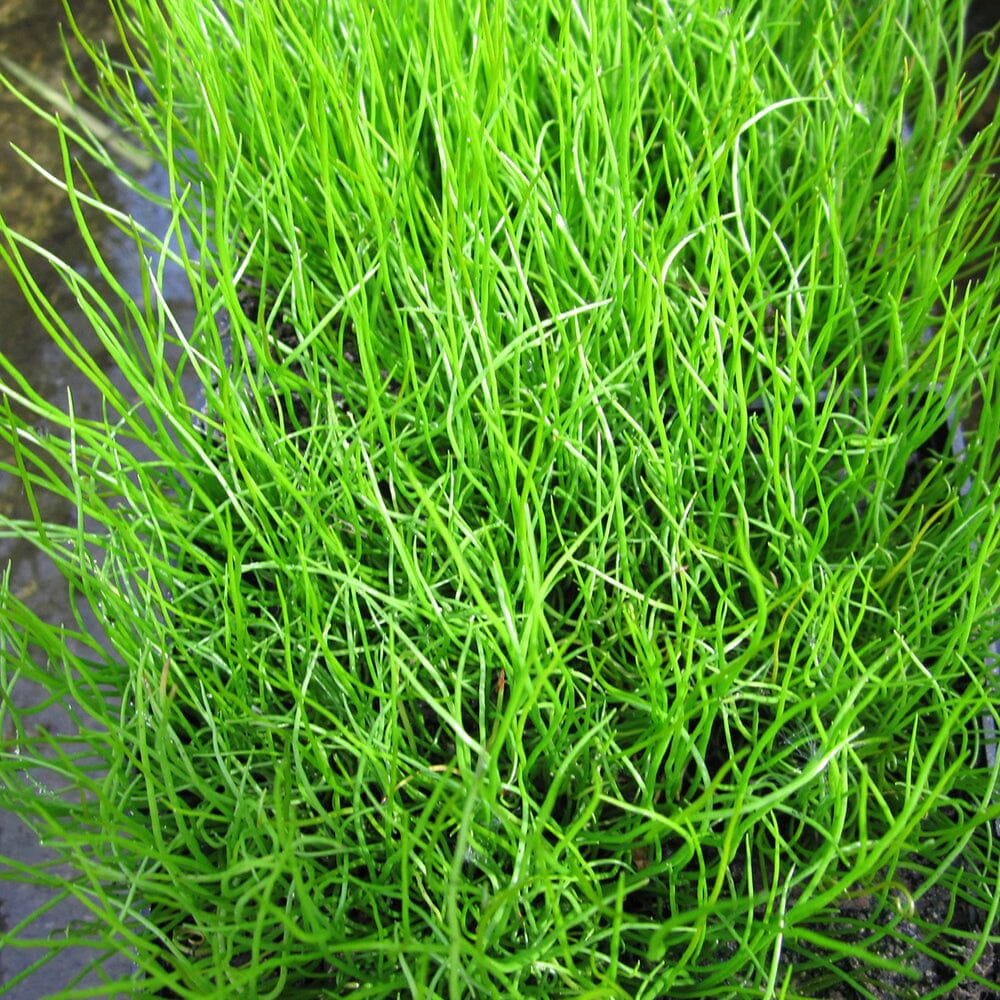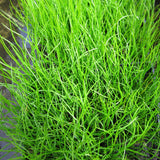Pilularia Globulifera Aquatic Pond Plant - Pillwort
Pilularia globulifera, commonly known as pillwort, is a unique and fascinating aquatic fern species. It is characterized by its spherical sporocarps that resemble small green peas.
Here is a detailed description and care guide for Pilularia globulifera:
Description:
Pilularia globulifera is a small aquatic fern that typically grows in shallow, freshwater environments such as ponds, marshes, and wetlands. It features slender, green stems with fine, needle-like leaves that are arranged in whorls along the stem. The sporocarps, which contain the plant's reproductive structures, are small, spherical, and green in color, resembling tiny green beads. They are typically found at the base of the plant and provide an interesting visual aspect.
Care Guide:
Lighting: Pilularia globulifera can tolerate a wide range of lighting conditions. It can thrive in both moderate and low-light environments. However, providing moderate lighting (around 2-3 watts per gallon) can encourage healthier growth and more vibrant coloration.
Water Parameters: This plant prefers slightly acidic to neutral water conditions with a pH range of 6.5-7.5. The temperature should be kept between 18-25°C (64-77°F). It is important to maintain good water quality by performing regular water changes and monitoring ammonia, nitrite, and nitrate levels.
Substrate: While Pilularia globulifera can tolerate a variety of substrates, a nutrient-rich substrate or a layer of aquatic soil can provide it with essential nutrients. A fine-grained substrate or sand is suitable for this plant.
CO2 and Fertilization: CO2 supplementation is not required for Pilularia globulifera, but it can benefit from regular liquid fertilization. Use a comprehensive liquid fertilizer to provide essential nutrients, particularly micronutrients, to support healthy growth.
Propagation: Pilularia globulifera can reproduce through spores produced in its sporocarps. However, propagating this plant from spores can be challenging. It is more commonly propagated through vegetative means, such as dividing the rhizomes or separating new plantlets that develop from the main plant.
Pruning: Regular pruning is not necessary for Pilularia globulifera, as it tends to grow slowly and doesn't become overly dense. However, you can trim back any excessive growth to maintain its appearance and prevent overcrowding.
Compatibility: Pilularia globulifera is generally compatible with a wide range of peaceful fish and invertebrates. It can provide shelter and hiding spots for small aquatic creatures.
Pilularia globulifera is a unique and visually appealing addition to aquatic setups. With proper care and maintenance, it can thrive and contribute to a natural and captivating aquatic environment. Regular observation and adjustments to care parameters will help ensure the health and vitality of this interesting aquatic fern.
Selection of Plants:
Choose appropriate oxygenating plants that are suitable for the size and depth of your pond. Common oxygenating plants include Hornwort (Ceratophyllum), Anacharis (Elodea canadensis), Waterweed (Elodea densa), and Watermilfoil (Myriophyllum species).
Placement:
Place oxygenating plants in the water at a depth where their foliage is fully submerged. Distribute the plants evenly throughout the pond, ensuring they receive adequate sunlight for photosynthesis.
Water Quality:
Oxygenating plants play a crucial role in maintaining good water quality by absorbing excess nutrients, competing with algae for resources, and releasing oxygen through photosynthesis. Regularly monitor water quality parameters such as pH, ammonia, nitrite, and nitrate levels to ensure they are within suitable ranges for the plants.
Nutrient Levels:
Oxygenating plants benefit from moderate nutrient levels in the water, but excessive nutrients can lead to rapid algae growth. Avoid over-fertilization or excessive organic matter accumulation in the pond, as it can negatively impact oxygenating plants.
Pruning and Maintenance:
Regularly thin out and prune oxygenating plants to prevent overcrowding and ensure healthy growth. Remove any dead or decaying plant material promptly to maintain water quality and prevent the release of excess nutrients.
Winter Care:
Some oxygenating plants may need special attention during winter, especially in colder climates. If your pond experiences freezing temperatures, consider moving potted plants indoors or provide insulation to protect them. In milder climates, oxygenating plants may continue to grow during winter, providing oxygen and supporting the pond ecosystem.
Propagation:
Some oxygenating plants can be propagated by dividing or taking cuttings. Follow specific instructions for each plant species to propagate them successfully and maintain a healthy population in your pond.
Monitoring and Control:
Regularly observe the growth and condition of oxygenating plants to identify any signs of disease, pests, or nutrient deficiencies. If needed, control excessive growth by removing excess plant material, but be careful not to remove too much at once, as it can disturb the pond's ecological balance.
Introduction of New Plants:
Before introducing new oxygenating plants into your pond, ensure they are free from pests, diseases, or invasive species. Avoid introducing non-native species that may become invasive and harm the local ecosystem. By following these general tips and care guidelines, you can maintain healthy oxygenating plants in your pond. They will contribute to the overall oxygenation of the water, provide habitat for beneficial organisms, and promote a thriving pond ecosystem.






























